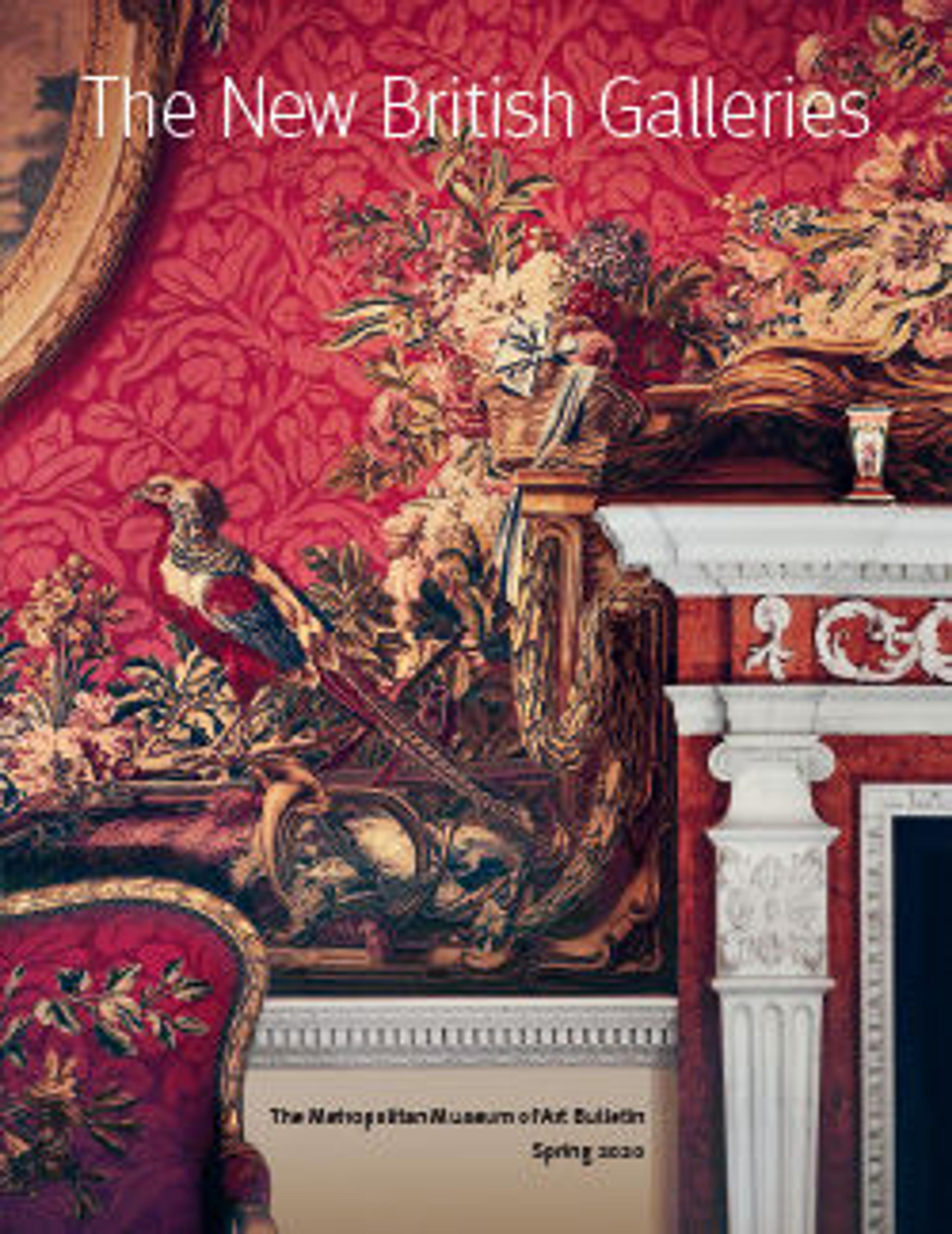Dining room from Kirtlington Park
Kirtlington Park was built for Sir James Dashwood between 1742 and 1746 by William Smith (1705–1747) and John Sanderson (d. 1783). The house and its park, which was laid out by Lancelot "Capability" Brown (1718–1783), are situated about ten miles north of Oxford. The Museum's room (ca. 1748), originally a dining room, occupied the space behind the three windows on the first floor of the right wing, as shown in the aerial photograph. Its plaster decoration is derived from a design signed by John Sanderson. At the four sides of the ceiling are panels emblematic of the seasons. The overmantel painting of a landscape with figures is signed by John Wootton (ca. 1686–1765) and dated 1748. The marble chimneypiece can be attributed by John Cheere (d. 1787) or Sir Henry Cheere (1703–1781). The mahogany doors and shutters are equipped with their original gilt-bronze hardware. The oak floor was probably cut from trees felled on the estate. The newly painted color of the room approximates the original color, as documented by microscopic examination of the various layers of paint.
Artwork Details
- Title: Dining room from Kirtlington Park
- Designer: John Sanderson (active from ca. 1730–died 1774)
- Maker: Chimneypiece possibly by Sir Henry Cheere (British, London 1703–1781 London)
- Maker: Chimneypiece possibly by John Cheere (British, London 1709–1787 London)
- Maker: Plasterwork attributed to Thomas Roberts (active 1685–1714)
- Date: 1748
- Culture: British, Oxfordshire
- Medium: Wood, plaster, marble
- Dimensions: confirmed: 20 ft. 2 in. × 35 ft. 5 in. × 23 ft. 5 in. (614.7 × 1079.5 × 713.7 cm); width extending into window niches 24 ft. 8 in. (751.8 cm).
- Classification: Woodwork
- Credit Line: Fletcher Fund, 1931
- Object Number: 32.53.1
- Curatorial Department: European Sculpture and Decorative Arts
More Artwork
Research Resources
The Met provides unparalleled resources for research and welcomes an international community of students and scholars. The Met's Open Access API is where creators and researchers can connect to the The Met collection. Open Access data and public domain images are available for unrestricted commercial and noncommercial use without permission or fee.
To request images under copyright and other restrictions, please use this Image Request form.
Feedback
We continue to research and examine historical and cultural context for objects in The Met collection. If you have comments or questions about this object record, please complete and submit this form. The Museum looks forward to receiving your comments.
